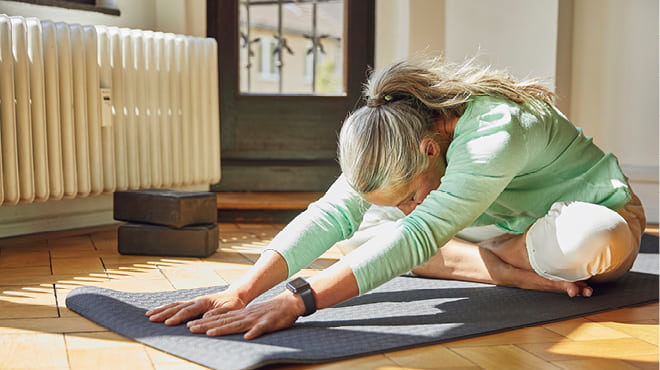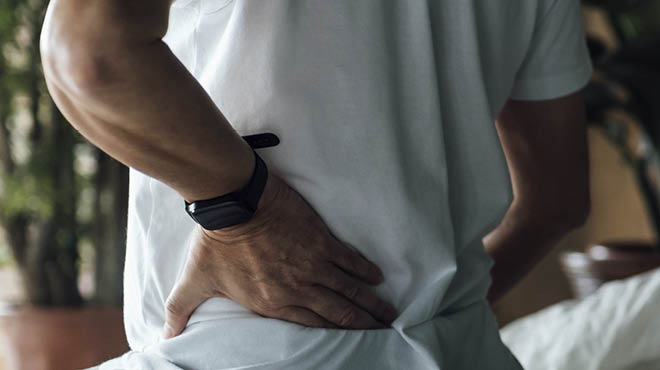
Innovative treatment for joint pain.
Need to make an appointment?
Orthopedics & Orthopedic Surgery (Bones)
- Overview
- Foot & Ankle
- Fractures & Trauma
- Hand & Wrist
- Hip, Knee & Shoulder Replacement
- Sports Medicine
- Preparing for Surgery
- Prevention & Self-Care
Recent Blogs
Prevention & Self-Care - Faribault
Self-Care
Over-the-counter medications — such as ibuprofen (Advil, Motrin IB, others) and naproxen sodium (Aleve) — may help ease joint or tendon pain. Some people find relief by rubbing the affected area with creams containing a numbing agent, such as lidocaine, or capsaicin, the substance that makes chili peppers hot.
Self-care measures for orthopedic injuries include:
- Rest – Take a break from your normal activities to reduce repetitive strain and to give the injury time to heal and help prevent further damage. A day or two of rest may be all you need for a minor injury. More severe damage is likely to need a longer recovery time.
- Ice – Ice reduces both pain and inflammation. A bag of frozen peas works well because it covers a large affected area. You also can use an ice pack wrapped in a thin towel to protect your skin. Although ice therapy is generally safe and effective, don't use ice for longer than 20 minutes at a time because of the risk of damage to your nerves and skin.
- Heat – You may experience temporary pain relief by applying a heat pack or hot-water bottle to the painful area.
- Compression – This helps prevent fluid buildup in damaged tissues and maintains alignment and stability. Look for a compression bandage that's lightweight, breathable and self-adhesive. It should be tight enough to provide support without interfering with circulation.
- Elevation – To help reduce swelling, try propping your injury up on pillows or sitting in a recliner. Often, self-care measures and a little time could be all you need for relieve your pain.
Prevention care
- Maintain a healthy weight – For every 10 lbs. of weight gained, there is a 36% increased risk of developing osteoarthritis. Obesity also puts more weight on your joints, which can weaken muscles and make injuries more likely.
- Keep it moving – Good exercises for everyone - even those with some orthopedic sensitivity - include stretching, walking, swimming and biking on a level ground. Try to avoid exercises that put too much stress on your joints, like deep knee bends. But keep working to increase muscle mass no matter your age.
- Develop a strong core – Strong core muscles help you balance your body weight. Yoga and Pilates are two good kinds of exercise to strengthen your core and promote orthopedic health.
- Stretch before exercise – Stretching is important to maintain flexibility, improve performance and decrease stress injuries like sprains and strains. If you're going to lift weights or do high impact aerobics, work on warm up and stretching exercises before and after exercise. These types of exercises promote increased flexibility and help prevent muscle and joint injuries.
- Wear comfortable shoes – Supportive shoes promote proper alignment. Women who wear high heels on a regular basis increase their risk of developing back pain and knee pain.
- Get regular checkups – Yearly visits to your primary care doctor are one great way to stay on top of your orthopedic health. This is especially important for older adults, who can be more likely to develop arthritis and suffer injuries. A primary care doctor can discuss additional preventive measures to protect your orthopedic and overall health.
Injury prevention tips:
- Anterior cruciate ligament (ACL) injury prevention
- Fall prevention
- Hamstring injury prevention
- Wrist pain prevention
Preventing broken bones
It's impossible to prevent the unforeseen events that often cause broken bones, but these tips might offer some protection.
- Protect yourself from athletic injuries – Wear protective equipment when playing contact sports. Wear wrist guards for high-risk activities, such as in-line skating, snowboarding, rugby and football.
- Don't smoke – Smoking can increase your risk of broken bones by reducing bone mass. It also hampers healing of fractures.
- Reduce the risk of household falls
- Clean spills promptly.
- Remove things you can trip over in your home, such as clutter and throw rugs.
- Light up your living space.
- Have your vision checked and, if needed, corrected.
- Install grab bars in your bathroom and handrails on your stairways.
- Avoid slippery surfaces, if possible, such as snow- or ice-covered walkways and use a rubber mat in the shower.
- Strengthen your muscles and bones
- Getting enough calcium and vitamin D in your diet is important for maintaining strong bones. Aim for about 1,200 milligrams of calcium and 600 International Units of vitamin D daily from food and supplements.
- Get plenty of weight-bearing exercise, such as brisk walking. For any new fitness program and individual workout, start slowly.
- Quit smoking if you're a smoker.
- Cross-train. Alternating activities can prevent stress fractures. Rotate running with swimming or biking. If you run on a sloped track indoors, alternate the direction of your running to even stress on your skeleton.
- Wear sensible shoes
- Choose the appropriate shoe for your favorite sports or activities.
- Replace athletic shoes regularly. Discard sneakers as soon as the tread or heel wears out or if the shoes are wearing unevenly. If you're a runner, replace your sneakers every 300 to 400 miles.
- Wear your seat belt – when traveling in a motorized vehicle, and keep children restrained in age-appropriate child safety seats.
- Wear a helmet – during bicycle or motorcycle rides.
Not all treatments, tests and services are available at all Mayo Clinic Health System locations. Check with your preferred location in advance.




